Overview of Popular Chinese Snacks
If you find yourself curious about the delicious world of snacks from China, you’re in for a treat! Chinese snacks are diverse, rich in flavor, and often represent the cultural heritage of various regions in China. Here, we’ll explore some of the most popular Chinese snacks that you might want to try, whether you’re visiting China or hunting for unique snacks in your local market.
One of the most famous types of snacks is dumplings. Dumplings come stuffed with various fillings, from pork to vegetables to shrimp. They’re often steamed, boiled, or fried and served with soy sauce or vinegar. Each region of China has its twist on dumplings, like Jiaozi from Northern China, which are popular during festivals.
Spring Rolls are another well-loved Chinese snack. These crispy rolls are filled with a mixture of vegetables and sometimes meat, then deep-fried. They are often served with a sweet and sour sauce for dipping. You can find spring rolls at many restaurants and they are also a common appetizer at Chinese holiday celebrations.
Mooncakes are a traditional snack enjoyed during the Mid-Autumn Festival. These round pastries have a thick filling, which can be made from red bean or lotus seed paste, and they often have salted egg yolks in the center. Mooncakes symbolize reunion and are shared among family and friends. For more details about mooncakes, check out the guide on China Daily.
Sesame Balls, or “Jian Dui,” are another delightful treat. These golden, crispy balls are made from glutinous rice flour and filled with sweet red bean paste. The outer layer is coated with sesame seeds, giving them a nutty flavor. They are often enjoyed during festivals and are known for being particularly chewy and satisfying.
In addition to sweet snacks, spicy snacks are very popular, especially in the Sichuan region. One such snack is Sichuan Spicy Peanuts, which are roasted peanuts tossed in a spicy seasoning mix. If you enjoy a kick of heat, these are a must-try! Another spicy snack is Chili Oil Noodles, where fresh noodles are tossed in homemade chili oil, garlic, and vinegar for a deliciously fiery kick.
For those who prefer something savory and crunchy, Golden Tofu Snacks are often enjoyed. These crispy tofu chips are seasoned and deep-fried, offering a protein-packed crunchy treat that pairs well with any dip or as a standalone snack.
If you’re looking for something on the lighter side, Fruit & Vegetable Chips are a great option. These are typically dehydrated or lightly fried slices of various fruits and vegetables like sweet potatoes, taro, or even pineapple. They are a healthier alternative and boast natural sweetness, perfect for those who enjoy a guilt-free snack option.
Another unique snack to explore is Steamed Buns, or “Bao.” These fluffy buns can be filled with savory fillings like meat or sweet fillings like custard. They are a popular street food and are often found in food markets or from street vendors.
These snacks can often be found globally but taste authentically Chinese when prepared traditionally. To find authentic Chinese snacks nearby, you might want to check out local Asian grocery stores or search online for specialty shops that offer Chinese treats.
Here’s a quick overview of some popular Chinese snacks:
| Snack | Description | Region |
|---|---|---|
| Dumplings (Jiaozi) | Stuffed with meat or vegetables, served steamed, boiled, or fried. | Northern China |
| Spring Rolls | Crispy rolls filled with vegetables and/or meat, deep-fried. | South China |
| Mooncakes | Round pastries filled with sweet paste, enjoyed during festivals. | Nationwide |
| Sesame Balls (Jian Dui) | Chewy balls with sweet red bean paste and sesame coating. | Nationwide |
| Sichuan Spicy Peanuts | Roasted peanuts with spicy seasoning. | Sichuan Region |
| Fruit & Vegetable Chips | Dehydrated or fried slices, a healthier snacking choice. | Nationwide |
Exploring popular Chinese snacks offers a significant insight into Chinese culture and culinary traditions. They can cater to a range of palates, from sweet to savory and spicy. Whether you try them in China or at home, these snacks are sure to impress!
Regional Variations in Chinese Snack Culture
Chinese snack culture showcases a rich tapestry of flavors and textures that vary greatly across regions. Each area of China boasts its own unique culinary traditions, influencing the types of snacks that are popular and loved by locals and visitors alike. By exploring these regional variations, you can get a taste of China’s diverse culinary heritage.
In North China, especially around Beijing, you will find a preference for hearty snacks. One of the most popular is baozi (steamed buns) filled with various ingredients like pork and vegetables. Another beloved snack is jianbing, a delicious savory crepe that usually contains eggs, herbs, and different fillings. These snacks are not just filling but also showcase the bold flavors typical of northern Chinese cuisine.
Moving towards the East Coast, regions like Shanghai are famous for sweet and savory delights. One iconic snack is the xiaolongbao, a soup dumpling filled with broth and meat—a must-try for anyone visiting the area. Another favorite is the shengjianbao, a pan-fried bun with a crispy bottom. The contrast of textures in these snacks reflects the culinary innovation found in this vibrant city.
In terms of snacks from South China, particularly Guangdong province, you encounter a more delicate range of flavors. Dim sum is king here, offering bite-sized portions that can be both sweet and savory. Favorites include shrimp dumplings (har gow) and pork buns (char siu bao). The tradition of dim sum also reflects the social aspect of snacking, as families and friends gather to share these small dishes. Local street food like char kway teow is another popular option, combining stir-fried rice noodles with various ingredients.
In contrast, Southwest China, particularly in the provinces like Sichuan and Yunnan, is famous for its bold, spicy flavors. Here, snacks often come with a kick. One prime example is the spicy “hot pot” ingredients that can be enjoyed as snacks. Another popular choice is the famous spicy pickled vegetables, which are often enjoyed alongside roasted meats. These snacks are characterized by the use of pungent spices and aromatic herbs, engaging the taste buds in a way that is both complex and unforgettable.
Taking a look at Central China, snacks here are known for their unique textures. The most notable is the stinky tofu, a fermented delicacy that has a strong aroma but is surprisingly delicious for those who dare to try it. The culinary culture of this region also promotes crispy, fried snacks like glutinous rice balls, which are often filled with sweet or savory fillings. These snacks celebrate the region’s agricultural abundance and the diversity of its culinary practices.
To better understand the different styles of Chinese snacks, the following table provides an overview:
| Region | Popular Snack | Description |
|---|---|---|
| North China | Baozi | Steamed buns filled with a variety of ingredients. |
| East Coast | Xiaolongbao | Soup dumplings with rich broth and meat. |
| South China | Dim Sum | Bite-sized portions of pork buns, dumplings, etc. |
| Southwest China | Spicy Pickled Vegetables | Savory and pungent vegetables with a spicy twist. |
| Central China | Stinky Tofu | Fermented, crispy fried snack with a powerful aroma. |
The evolution of snack culture in China is a reflection of its diverse history, geography, and ingredients unique to each region. By trying various snacks from across the country, you’ll gain insights into the tastes and traditions that define Chinese culture as a whole. For those who seek to explore further, check out the insightful resources at China Tour Star, which delves deeper into the fascinating world of Chinese snacks.
Embrace the flavors of China by exploring these regional variations in snack culture. Each bite is not just a taste sensation but also a conversation with the rich culinary heritage waiting to be discovered.
Traditional vs. Modern Chinese Snacks
The world of Chinese snacks is vibrant and diverse, blending traditional flavors with modern innovation. Exploring the differences and characteristics of traditional and modern snacks offers insights into cultural evolution and culinary creativity.
Traditional Chinese Snacks
Traditional Chinese snacks often embody the rich history of the country. These snacks have been passed down through generations, carrying with them cultural significance and regional flavors. Here are some beloved examples:
- Jiaozi (Dumplings): Often filled with a mixture of meat and vegetables, jiaozi are a staple during festivals and family gatherings.
- Baozi (Steamed Buns): These are soft, fluffy buns stuffed with various fillings, including pork, chicken, or sweet red bean paste.
- Mooncakes: Traditionally enjoyed during the Mid-Autumn Festival, these round pastries are filled with sweet or savory fillings and symbolize reunion.
- Tea Eggs: Hard-boiled eggs steeped in a mixture of tea, soy sauce, and spices, offering a unique and rich flavor.
- Wontons: These thin-skinned dumplings can be boiled or fried and are commonly served in a savory broth.
Each of these snacks showcases distinctive tastes and preparation methods that reflect the diverse regional cuisines of China. They are often enjoyed during special occasions, emphasizing their importance in Chinese culture. For further insights into traditional Chinese snacks, you can visit China Highlights.
Modern Chinese Snacks
As globalization has influenced culinary practices, modern Chinese snacks have emerged, combining traditional elements with contemporary flavors and techniques. These snacks cater to changing tastes and the fast-paced lifestyle of today. Here are some examples:
- Spicy Snacks: Featuring bold flavors, these may include spicy potato chips or popcorn, appealing to the adventurous palate.
- Bubble Tea: Originating in Taiwan, this drink combines tea with milk and chewy tapioca pearls, making it a trendy snack option.
- Flavored Noodles: Instant noodles have transformed, now available in unique flavors like truffle or spicy Sichuan, perfect for a quick meal.
- Fusion Dishes: Modern snacks often blend Chinese cuisine with other culinary traditions, such as sushi burritos or Korean-Chinese fried chicken.
- Fruit Snacks: Dried fruit or fruit chips provide a healthy option, reflecting the growing demand for nutritious snacks.
Modern Chinese snacks reflect consumer preferences and convenience, making them widely popular among the younger generation. They offer a fresh twist on traditional flavors, easily found in convenience stores or trendy cafes. For more on modern snack trends, you can check out Serious Eats.
Comparative Analysis of Traditional and Modern Chinese Snacks
| Aspect | Traditional Snacks | Modern Snacks |
|---|---|---|
| Flavor Profile | Deep-rooted regional flavors | Innovative, often influenced by global trends |
| Ingredients | Natural, local ingredients | Variety of ingredients, including artificial flavors |
| Preparation Time | Time-intensive, often requiring skill | Quick and easy to prepare or consume |
| Cultural Significance | Holds deep cultural roots | Reflects modern lifestyle and preferences |
Understanding the distinctions between traditional and modern snacks not only enriches your culinary knowledge but also enhances your overall dining experience. Whether you lean towards the nostalgic flavors of traditional snacks or the innovative twist of modern ones, Chinese cuisine offers something for everyone.
For a comprehensive view on both historical and current trends in Chinese cuisine, consider exploring Chinese Food History. This resource highlights the evolution of snacks and dishes over time, blending tradition with modernity in insightful ways.
Next time you indulge in a Chinese snack, think about its origins and how it fits into the vast tapestry of Chinese culture. Enjoying these treats can be a delicious journey through time!
Street Food: The Heart of Chinese Snacking
Street food is vibrant and deeply rooted in Chinese culture. With bustling markets and street vendors, you can find a variety of delicious snacks that capture the flavors of this rich tradition. Chinese street food is not just about the food itself; it’s an experience of aromas, textures, and the lively atmosphere surrounding food stalls.
In cities across China, you’ll encounter an array of snacks that reflect local tastes and ingredients. Each region boasts its own specialties, ensuring that every bite tells a story about its origin. Here’s a look at some popular Chinese street snacks you shouldn’t miss:
- Jianbing (煎饼): This is a savory crepe filled with eggs, scallions, and various spices. Served with crispy wonton strips and a choice of sauces, jianbing is a popular breakfast option.
- Chuan’r (串儿): These are skewered meats, often marinated and grilled over coals. In different regions, you’ll find lamb, chicken, or even veggies on sticks, seasoned with spices, offering a perfect quick bite.
- Roujiamo (肉夹馍): Known as the “Chinese hamburger,” this dish features slow-cooked meat stuffed in a crispy flatbread. It’s a filling snack that’s served with various sauces and condiments.
- Tanghulu (糖葫芦): A beautiful treat, tanghulu consists of candied fruit, usually hawthorn berries, skewered on a stick and coated in sugar syrup. It’s a sweet and tangy snack perfect for attracting sweet lovers.
- Dumplings (饺子): While dumplings are commonly served as a main dish, you can find smaller, simpler versions sold on the streets. Boiled or fried, they can be filled with meat, vegetables, or even sweet fillings.
- Fried Maple Syrup Balls (炸枫糖球): A crunchy exterior and a sweet syrupy center; these are usually served during the colder months, providing warmth and comfort with every bite.
- Baijiu (白酒): Not a snack, but many street vendors offer small cups of this traditional Chinese liquor as a perfect companion to your salty snacks, enhancing the overall experience.
In addition to these delights, you might also encounter regional specialties that reflect local ingredients and cultural influences. For example, in Sichuan, spicy snacks are prevalent, whereas in Guangzhou, you may find dim sum-style bites available on the street.
The vendor plays a crucial role in the experience of street food. They often have years of experience, sometimes passed down through generations. Their mastery allows them to prepare dishes quickly while maintaining flavor and quality. Watching a skilled vendor cook can be mesmerizing, and it adds a layer of authenticity to the experience.
Now let’s take a closer look at snacks that can be found across various regions of China:
| Region | Popular Snacks | Special Ingredients |
|---|---|---|
| Beijing | Jianbing, Chuan’r | Eggs, various spices |
| Shandong | Fried Dough Sticks (油条) | Wheat flour |
| Guangdong | Dim Sum, Wontons | Pork, shrimp, and various fillings |
| Sichuan | Spicy Tofu Skewers | Chili peppers, Sichuan peppercorns |
It’s also worth noting that street food has caught the attention of foodies worldwide. People are traveling to China not just for its ancient history and stunning landscapes but to savor its fantastic street fare. Street food festivals and markets are popping up, showcasing authentic flavors and providing a social space for enjoying food with friends and family.
Whether you’re a casual snacker or a culinary enthusiast, indulging in Chinese street food is a must. These offerings reflect the country’s diversity, creativity, and cultural heritage. For more about Chinese street food and to explore different regional specialties, visit China Highlights.
As you wander through the bustling streets of China, keep an open mind and an eager palate. Each snack has a unique flavor profile that could surprise you. Happy tasting!
Healthier Alternatives to Common Chinese Snacks
Chinese cuisine is rich and varied, offering a plethora of snacks that are beloved around the world. However, many traditional Chinese snacks can be high in calories or low in nutritional value. If you’re looking for healthier alternatives that still pack a flavorful punch, here are some great options to consider.
Lower-Calorie Dumplings
Dumplings are a popular snack in Chinese cuisine but can be quite calorie-dense, especially when fried. Instead, you can opt for steamed dumplings made with whole wheat or rice flour. Using a lighter filling, like vegetables, chicken, or shrimp, can also reduce the calorie count.
Rice Crackers
Traditional rice crackers are often fried or flavored with high-sodium seasonings. You can choose air-popped or baked rice crackers instead. Look for options that use whole grains, and opt for those seasoned with herbs or spices rather than high-sodium flavorings.
Fresh Spring Rolls
Unlike fried spring rolls, fresh spring rolls made with rice paper and filled with colorful veggies like carrots, cucumber, and lettuce can be a healthier choice. Pair them with a homemade dipping sauce made of soy sauce, lime, and a touch of sesame oil for flavor without added sugar.
Fruit and Nut Snacks
For a sweet and healthy option, consider dried fruit and nut combinations. Instead of sugary snacks, you can snack on a mix of unsweetened dried mango, almonds, and walnuts. This will provide you with beneficial nutrients and fibers.
Baked Sweet Potato Chips
If you can’t resist chips, try baked sweet potato chips seasoned with a sprinkle of sea salt and paprika. This alternative is not only lower in calories but also offers added nutrients compared to standard potato chips.
Edamame
Instead of snacking on fried tofu, consider having a bowl of steamed edamame. This plant-based protein source is rich in fiber and makes for a satisfying snack when sprinkled with sea salt.
Tea Eggs
Tea eggs made from hard-boiled eggs steeped in a tea and spice mixture can be a nutritious option. They are high in protein and iron, making them a filling and healthy snack.
Homemade Bao Buns
Instead of buying deep-fried bao buns, consider making your own. Using whole wheat flour and filling them with a mixture of lean meat and vegetables can offer a healthier take without sacrificing flavor.
Dumpling Soup
Another delicious option is dumpling soup, using the same healthy dumplings but served in a light broth. This can be warming and satisfying, especially in colder months. You can add fresh vegetables to the broth for added nutrients.
Whole Grains
When making snacks, always try to incorporate whole grains. Choose brown rice or quinoa in your fried rice dishes, and experiment with whole-grain noodle options for dishes like lo mein.
Snack Alternatives List
| Common Snack | Healthier Alternative |
|---|---|
| Fried Dumplings | Steamed Dumplings |
| Fried Rice Crackers | Baked Rice Crackers |
| Fried Spring Rolls | Fresh Spring Rolls |
| Traditional Potato Chips | Baked Sweet Potato Chips |
| Deep-Fried Tofu | Steamed Edamame |
By choosing these healthier alternatives, you can enjoy the rich taste of Chinese snacks without the heavy calorie load. Getting creative in the kitchen by using fresh ingredients and flavorful herbs and spices can lead to satisfying and nutritious snack options.
For more information on healthy Chinese cuisine, check out Chinese Food Recipes and Eat Well 101.
Always ensure to keep your portion sizes in check, and remember that enjoying these snacks occasionally does not compromise your healthy eating journey. With these healthier alternatives, you can indulge in the vibrant world of Chinese snacks while maintaining your health and well-being!
How Chinese Snacks Have Evolved Over Time
Chinese snacks have a rich history that reflects the country’s diverse culture and culinary traditions. Over time, these snacks have evolved significantly, influenced by regional flavors, globalization, and technological advancements in food production and preservation. From age-old street foods to modern packaged snacks, the journey of Chinese snacks is as fascinating as it is flavorful.
Historically, the origins of Chinese snacks can be traced back to ancient dynasties. Street vendors used to sell simple and portable foods that were easy for workers and travelers to consume. Popular items included steamed buns, dumplings, and rice cakes, which showcased regional ingredients and cooking techniques. For instance, in the northern regions, wheat-based products like baozi (steamed buns) and jiaozi (dumplings) were common, while rice-based snacks were more prevalent in the south.
As time went on, the variety and complexity of snacks began to diversify. During the Ming and Qing Dynasties, the culinary practices expanded significantly, introducing more elaborate snacks that incorporated various spices, flavors, and cooking methods. Sweet treats such as mooncakes and sesame balls gained popularity, particularly during festivals and celebrations.
The early 20th century marked another turning point. With cities growing rapidly, urbanization helped spread regional snacks across the nation. For example, the famous red bean paste became a common filling in a variety of snacks, from pancakes to steamed buns. Roads and transportation also improved, making it easier for vendors to bring different flavors and ingredients to various parts of the country.
Globalization in the late 20th century introduced even more changes. As Chinese communities established themselves in foreign countries, authentic Chinese snacks began to blend with local tastes. This led to the creation of hybrid snacks, such as crispy shrimp chips flavored with spices popular in Southeast Asia. Today, you can find these snacks in international markets and supermarkets, reaching millions of taste buds worldwide.
The modern era has also seen the emergence of innovative snacks due to advances in food technology. Packaged snacks have become a booming industry in China, with brands like Lay’s, Wanglaoji, and Haagen-Dazs offering flavors that combine traditional Chinese tastes with contemporary formats. Some examples include:
- Spicy Noodle Snacks: These convenient packets include instant noodles with various spicy flavors, appealing to younger generations.
- Tea-flavored Chips: traditional Chinese teas like oolong into snacks gives these chips a unique taste that captures the fusion of ancient and modern.
- Fruit and Nut Bars: Often snacks enjoyed by health-conscious consumers, these bars include local ingredients such as goji berries and dates.
Another fascinating aspect of the evolution of Chinese snacks is how they cater to dietary needs and trends. In recent years, there has been a rise in gluten-free, vegan, and organic snack options. Many traditional snacks are being reformulated to accommodate these lifestyles, ensuring that everyone can enjoy a piece of China’s culinary heritage. For example, rice cakes have been adapted to include quinoa or other superfoods.
Interestingly, social media and online platforms have played a vital role in popularizing snacks among the younger generation. Platforms like Douyin (TikTok) and Xiaohongshu (Little Red Book) enable users to share reviews and cooking videos, helping to ignite interest in traditional snacks and encourage creativity in creating new snack combinations. Now, you can find users making unique fusion snacks or experimenting with new ingredients, which continues to break the boundaries of traditional Chinese culinary arts.
| Snack Type | Key Ingredients | Regional Origin |
|---|---|---|
| Jiaozi (Dumplings) | Ground meat, vegetables, dough | North China |
| Mooncakes | Flour, lotus seed paste, salted egg yolk | All regions, popular during Mid-Autumn Festival |
| Sesame Balls | Glutinous rice flour, red bean paste, sesame seeds | South China |
The future of Chinese snacks looks bright, with a continuous blend of tradition and innovation. As more people around the world discover these delightful treats, the potential for new flavors and styles remains limitless. For those curious to explore further, websites like The Takeout and Serious Eats offer great insights and detailed recipes to experience Chinese snack culture at home.
As you indulge in these diverse and evolving snacks, you partake in a culinary journey that spans centuries, showcasing the adaptability and creativity of one of the world’s most vibrant food cultures.
Pairing Chinese Snacks with Beverages: A Guide
When it comes to enjoying Chinese snacks, the experience can be elevated significantly by pairing them with the right beverages. Whether you are at a dim sum restaurant, a festive gathering, or just snacking at home, finding the perfect drink to complement your favorite bites can make all the difference. Here’s a guide to some delightful Chinese snacks and the beverages that go best with them.
Popular Chinese Snacks and Their Perfect Beverage Pairings
Let’s explore various beloved Chinese snacks and suitable beverages that enhance their flavors:
| Chinese Snack | Suggested Beverage |
|---|---|
| Dumplings | Jasmine Tea |
| Spring Rolls | Chrysanthemum Tea |
| Peking Duck | Red Wine |
| Mooncakes | Oolong Tea |
| Spicy Szechuan Noodles | Lemonade |
| Rice Cakes | Chilled Beer |
Dumplings with Jasmine Tea
Dumplings are a staple in Chinese cuisine, offering a delightful mix of flavors with each bite. Pairing these with jasmine tea enhances the delicate flavors without overpowering them. The floral notes of the tea balance the savory dumplings, making this combination a harmonious delight.
Spring Rolls with Chrysanthemum Tea
Spring rolls are crunchy and filled with delicious ingredients. They pair wonderfully with the refreshing chrysanthemum tea. The floral and slightly sweet taste of the tea complements the crispness of the spring rolls, adding a lightness that makes each bite more enjoyable.
Peking Duck with Red Wine
For a richer experience, indulge in Peking duck with a glass of red wine. The robust flavors of the duck match beautifully with a fruity or spicy red wine, enhancing the savory richness of the dish. You can also opt for specific wine suggestions that bring out the best in each other.
Mooncakes with Oolong Tea
During festivals, mooncakes are a must-have treat. Pairing these with oolong tea offers a delightful experience. The rich, complex flavors of the oolong complement the sweet and savory filling of the mooncakes, creating a balance that enhances the celebration.
Spicy Szechuan Noodles with Lemonade
The kick of spicy Szechuan noodles can set your taste buds ablaze. To cool things down, a glass of fresh lemonade works wonders. The tartness of the lemonade helps to counterbalance the heat, refreshing your palate and making the meal more enjoyable.
Rice Cakes with Chilled Beer
For those who enjoy casual snacking, rice cakes are a light and versatile choice. Pair them with a chilled beer for a satisfying combination. The malty flavor of the beer tones down the lightness of the rice cakes, adding a unique touch to your snack time.
Tips for Pairing Snacks and Beverages
When it comes to pairing, consider the following tips:
- Balance Flavors: Match rich snacks with lighter drinks and spicy ones with refreshing beverages.
- Think About Temperatures: Hot snacks pair well with chilled drinks, while cold snacks can be enjoyed with warm beverages.
- Experiment: Don’t be afraid to try different combinations to find what you enjoy the most.
Exploring the rich world of Chinese snacks and beverages will undoubtedly enhance your culinary adventures. Each pairing not only complements but elevates the experience, opening doors to flavors you might not have encountered before. So, the next time you indulge in these tasty snacks, keep these beverage suggestions in mind and enjoy every bite!
Key Takeaway:
When it comes to Chinese snacks, there’s a rich tapestry woven from diverse flavors, textures, and traditions. An overview of popular Chinese snacks reveals a delightful array of options ranging from savory to sweet. Whether you’re munching on classic dumplings, enjoying crispy spring rolls, or savoring sweet mooncakes, each snack tells a story of its region and cultural significance. The regional variations play a pivotal role in the snacking landscape, with northern China often favoring hearty, wheat-based snacks while the south delights in rice-based treats. This diversity highlights how regional ingredients and culinary practices shape the snack culture throughout the nation.
The contrast between traditional and modern Chinese snacks showcases an interesting evolution. Traditional snacks like steamed buns and sesame balls have been enjoyed for centuries, carrying rich histories and family recipes. In contrast, modern snacks, influenced largely by globalization and innovation, include a fusion of flavors and new ingredients, appealing to younger generations craving something familiar yet novel. This blend of old and new reveals how snacking in China adapts while still honoring its roots.
Moreover, the vibrant street food scene epitomizes the heart of Chinese snacking. Street vendors offer quick bites that are often affordable and brimming with flavor, making them an essential part of the daily life of many Chinese people. From spicy skewers in Sichuan to crispy fried stinky tofu in Taiwan, street food isn’t just a meal; it’s an experience.
As health consciousness rises, there’s also been a shift toward healthier alternatives to traditional snacks, such as roasted nuts and vegetable-based chips, allowing snack lovers to indulge guilt-free. The move toward nutritious options indicates a broader trend toward mindful eating while enjoying the pleasures of snacking.
The evolution of Chinese snacks over time reflects cultural shifts and increased global connectivity. Understanding how these snacks have developed enhances the experience of tasting them. Pairing Chinese snacks with beverages can elevate your snacking journey; for example, a cup of jasmine tea complements the flavors of dumplings beautifully, creating a well-rounded experience.
Chinese snacks represent a vibrant mix of tradition and innovation, regional flavors and urban trends, reflecting the culture’s dynamic nature. Whether you’re indulging in street food, savoring a traditional recipe, or exploring modern flavors, Chinese snacks offer something for everyone, making them a delicious reflection of a rich culinary heritage.
Conclusion
Chinese snacks hold a vibrant place in culinary culture, reflecting a rich tapestry of flavors, traditions, and regional variations. From the savory crunch of Xi’an’s pita bread sandwiches to the sweet delight of Beijing’s pastries, every region showcases its unique palette. Traditional snacks often serve as comforting reminders of cultural heritage, while modern interpretations combine innovative twists that appeal to contemporary tastes.
Street food stands at the forefront of China’s snacking scene, delivering quick and delicious options that encapsulate the nation’s culinary heart. The hustle and bustle of street vendors offer an authentic experience, allowing you to savor flavors you won’t find in restaurants. As health consciousness rises, many are now exploring healthier alternatives that maintain the essence of traditional snacks while catering to dietary preferences.
Over the years, Chinese snacks have evolved, adapting to global influences and changing lifestyles. Today’s snack choices blend age-old recipes with modern techniques, creating exciting new flavors that appeal to diverse audiences. Pairing these snacks with the right beverages enhances your snacking experience, whether you’re enjoying a casual tea with dumplings or a fizzy drink with spicy wings.
Exploring Chinese snacks is not just about tasting wonderful flavors; it’s a journey through culture, history, and innovation. Whether you prefer indulging in timeless traditional snacks or trying trendy new flavors, there’s something delightful for everyone. So why not embark on this delicious journey and discover your new favorite Chinese snack today?
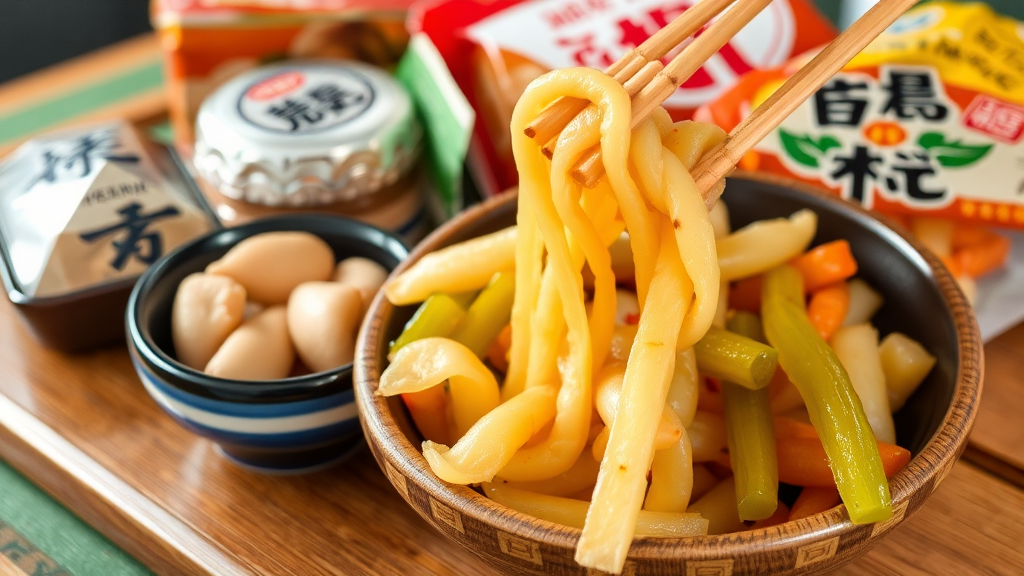


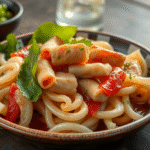
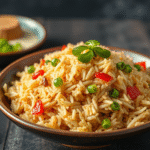
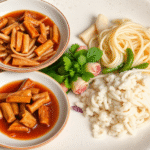
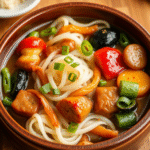
Leave a Reply